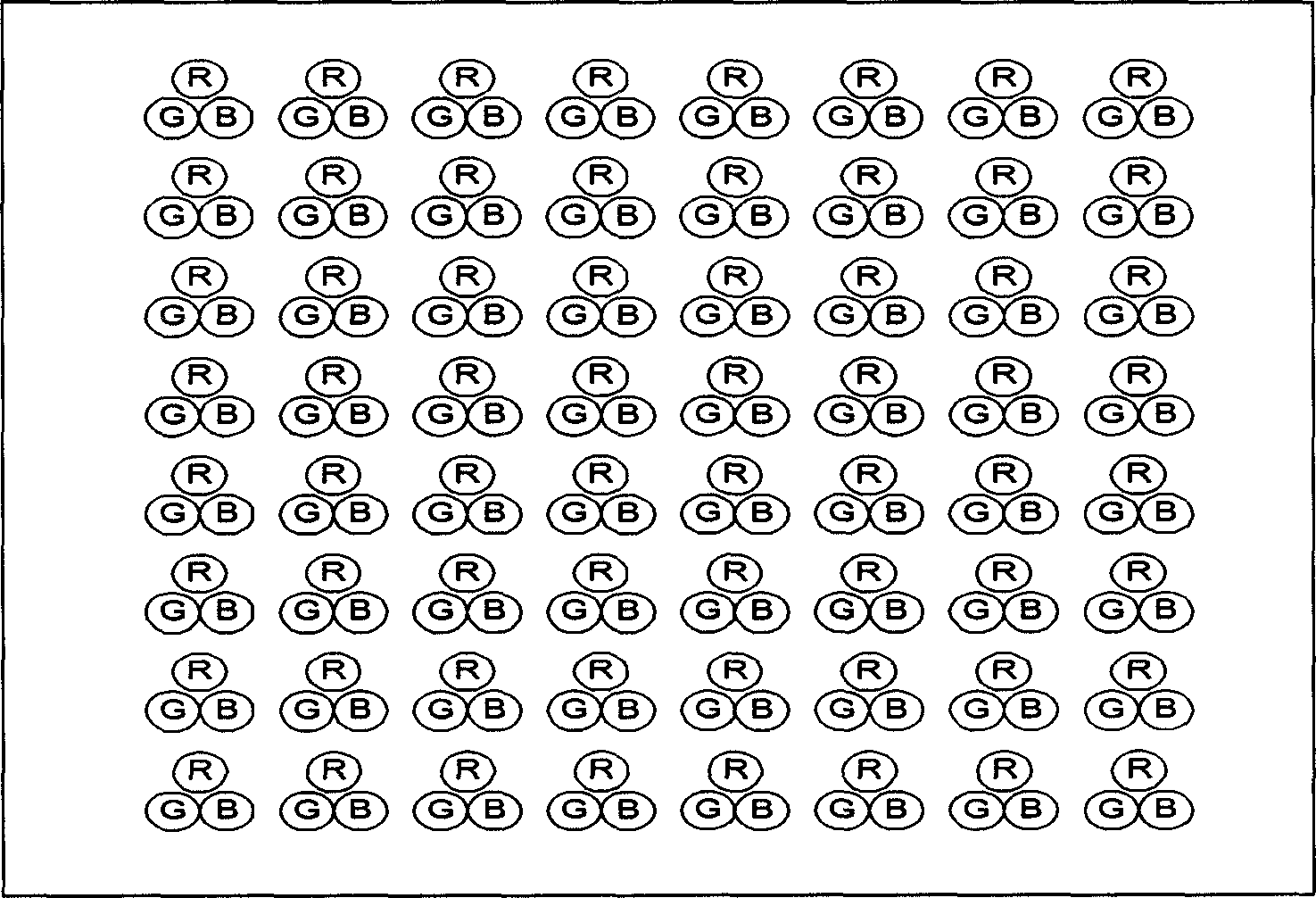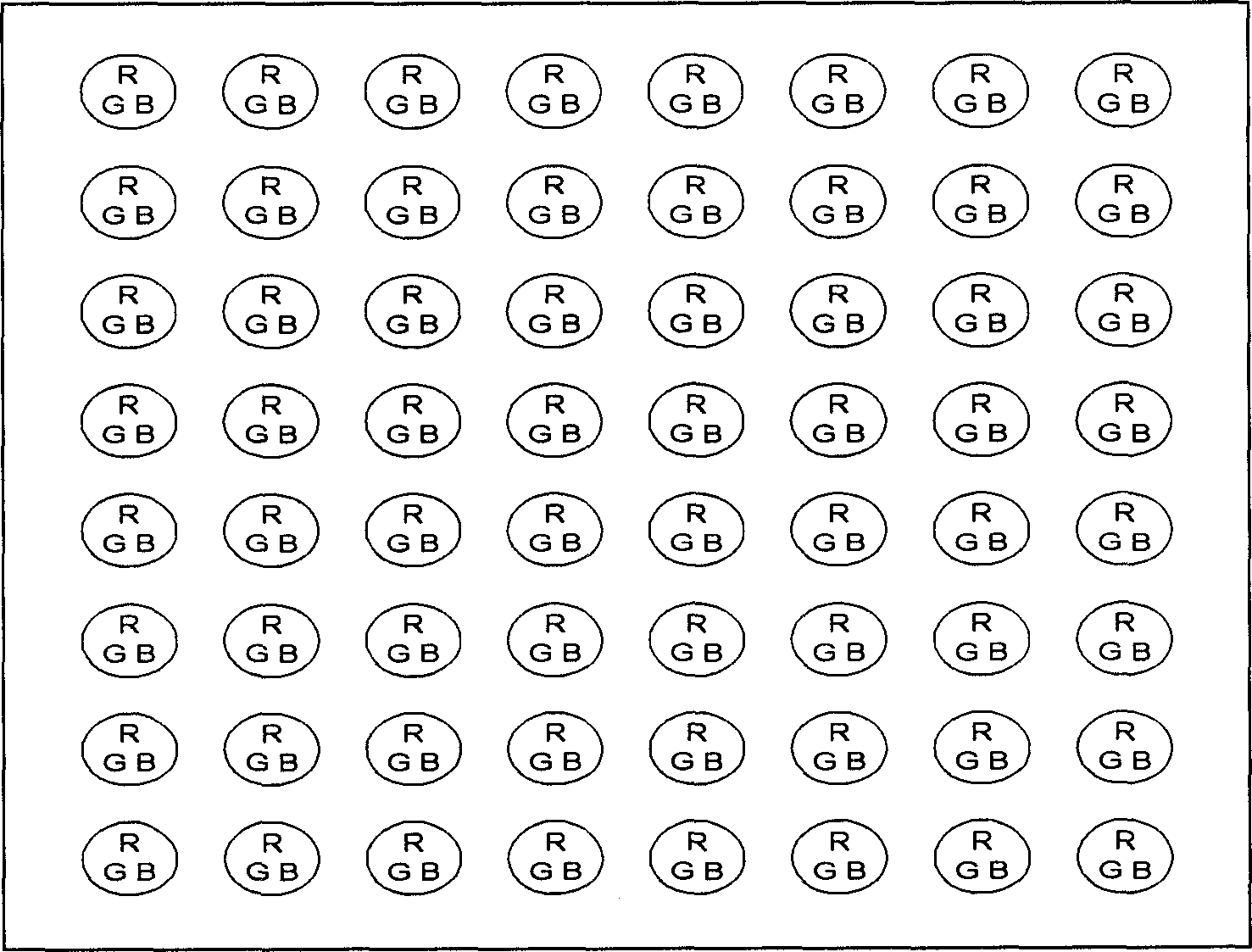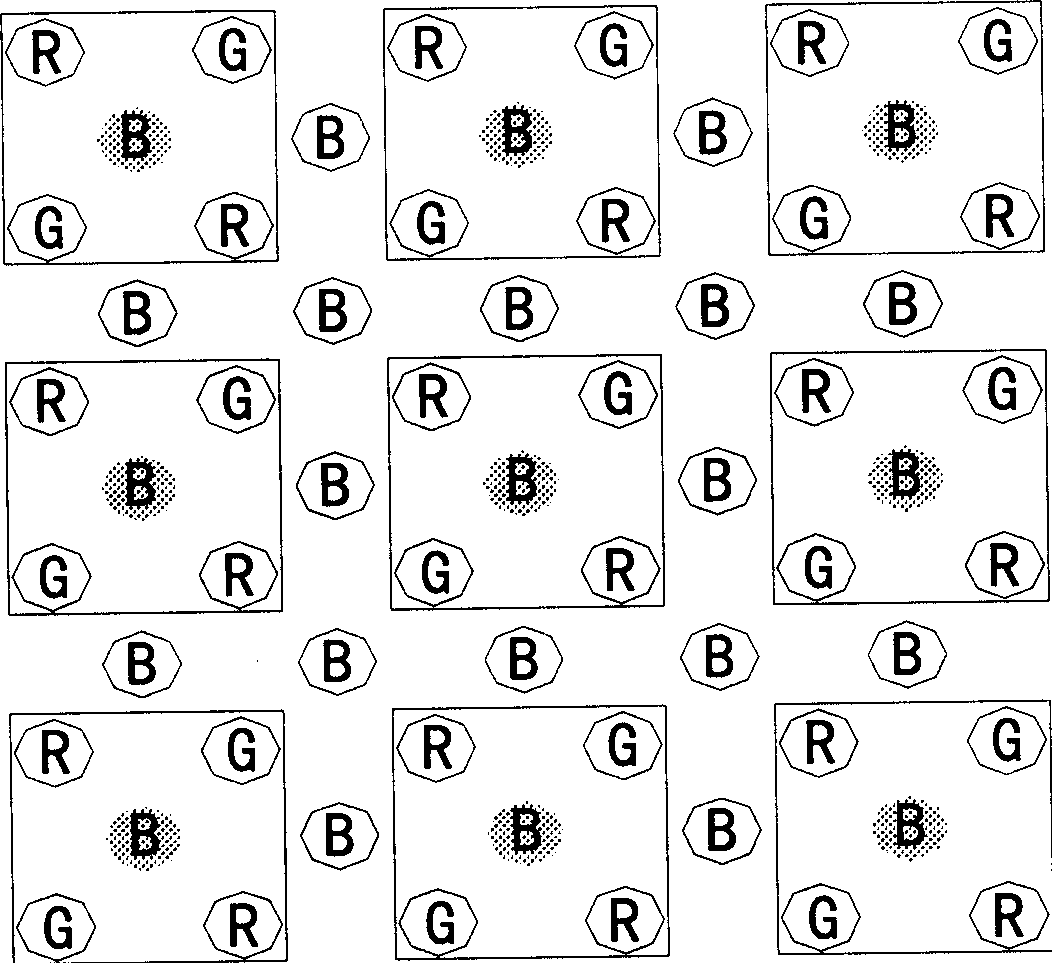Five-light arranging method for three basic color LEDs
A basic color, LED display technology, applied in the direction of instruments, identification devices, etc., can solve the problems of not being able to guarantee the display effect well, affecting the performance of display effect equipment, and poor heat dissipation performance of light-emitting diodes, so as to improve the display effect and image Strong reduction ability, better brightness and consistency
- Summary
- Abstract
- Description
- Claims
- Application Information
AI Technical Summary
Problems solved by technology
Method used
Image
Examples
Embodiment Construction
[0023] Such as image 3 The LED arrangement of the utility model shown is composed of RGBGR square arrays.
[0024] The arrangement of the individual RGBGR square arrays is: in the array of elements, the upper left is R (red light-emitting diode), the upper right is G (green light-emitting diode), and the center of the square matrix is B (blue light-emitting diode). , the lower left is G (green light-emitting diode), and the lower right is R (red light-emitting diode). We call it the RGBGR square matrix in the order of upper left, upper right, center, lower left, and lower right.
[0025] In this technology, behind the display screen is the electronic circuit control technology. Each monochromatic light point (R, B or G) on the display screen can be independently regarded as a point. Compared with the previous technology, it can ensure that the entire screen has better effects in terms of color, brightness and consistency.
[0026] Such as Figure 7 As shown, 2R2G1B in th...
PUM
 Login to View More
Login to View More Abstract
Description
Claims
Application Information
 Login to View More
Login to View More - R&D
- Intellectual Property
- Life Sciences
- Materials
- Tech Scout
- Unparalleled Data Quality
- Higher Quality Content
- 60% Fewer Hallucinations
Browse by: Latest US Patents, China's latest patents, Technical Efficacy Thesaurus, Application Domain, Technology Topic, Popular Technical Reports.
© 2025 PatSnap. All rights reserved.Legal|Privacy policy|Modern Slavery Act Transparency Statement|Sitemap|About US| Contact US: help@patsnap.com



